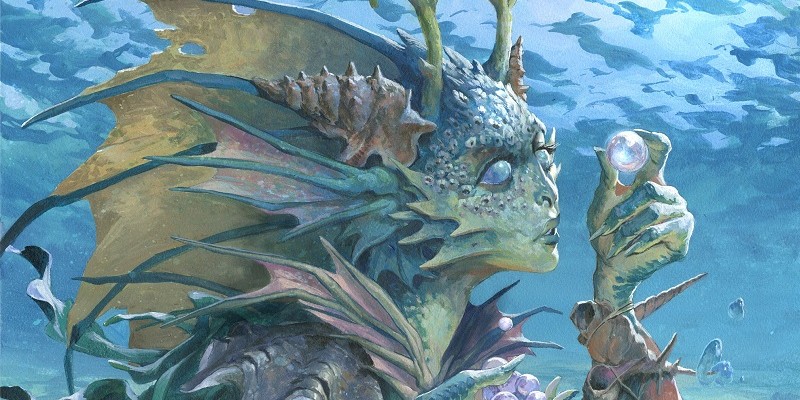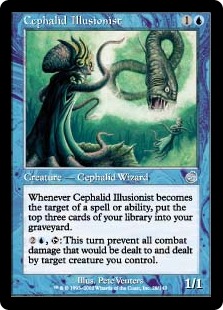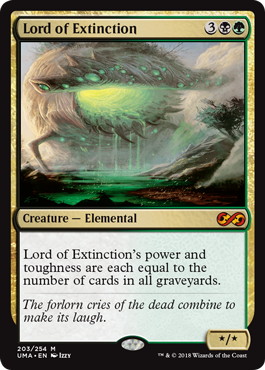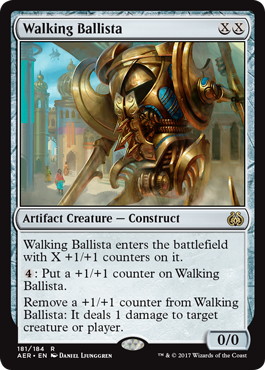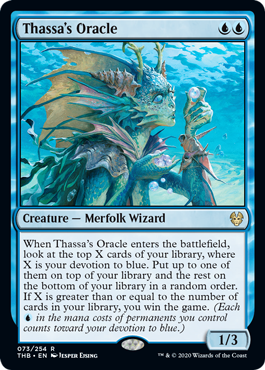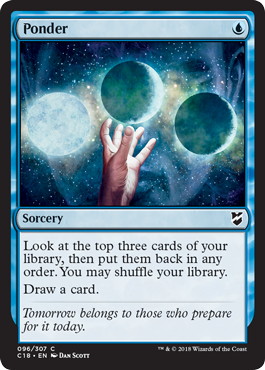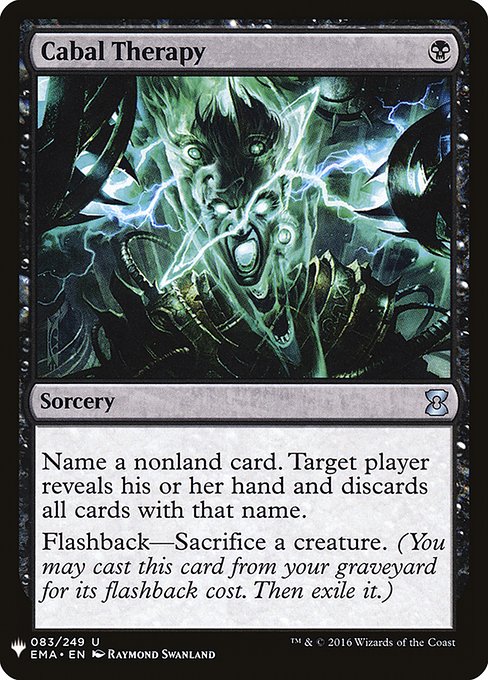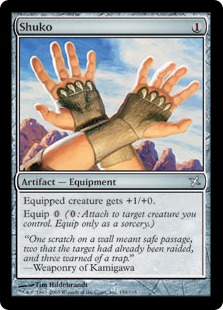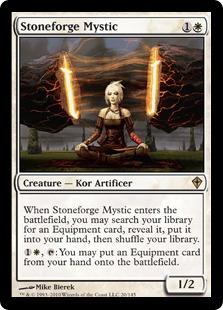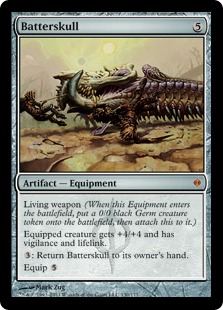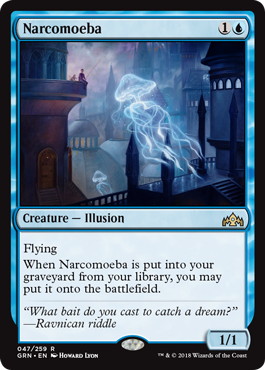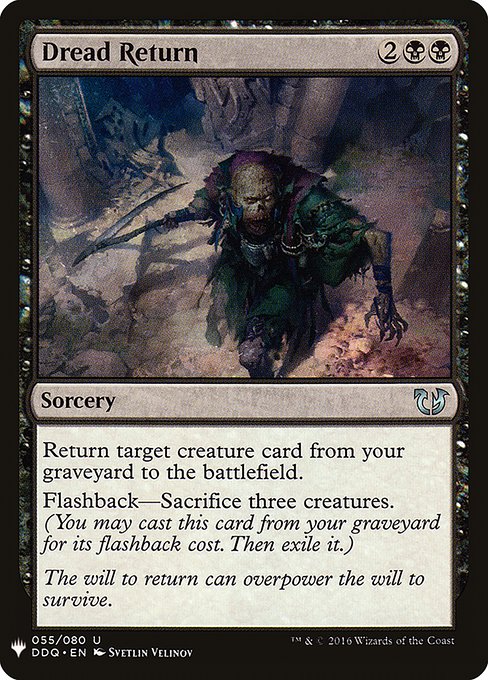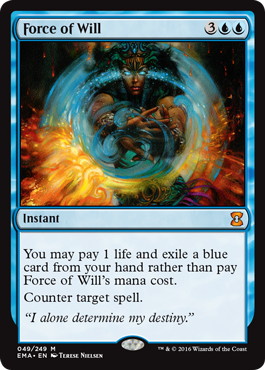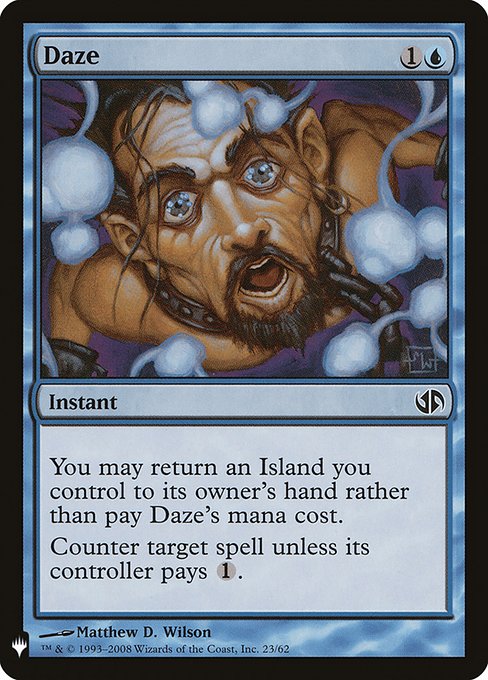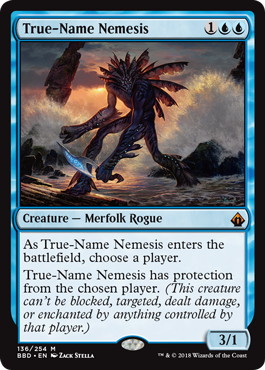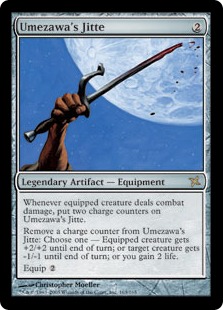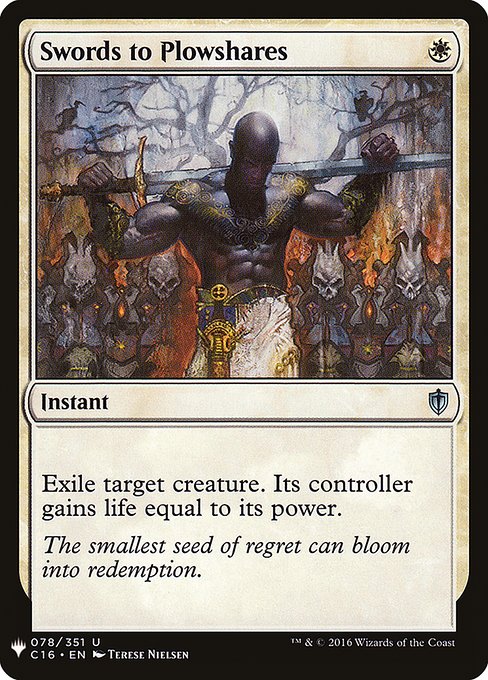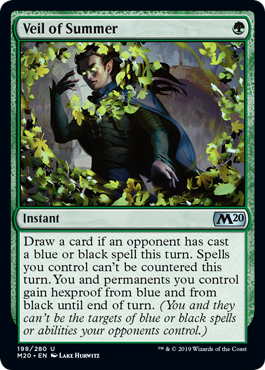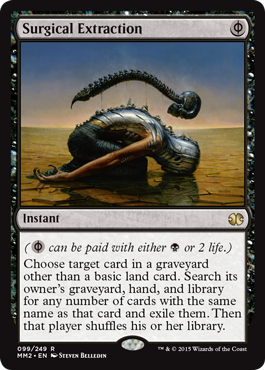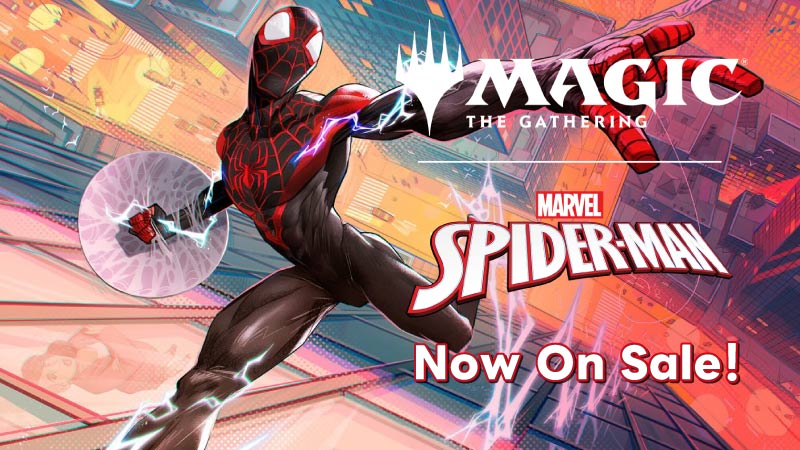Introducing My Pet Deck
Hola!
As Magic players, we often hear about pet decks. For me, there’s one deck that always comes to my mind. Let me introduce you my pet deck: Cephalid Breakfast (Legacy).
Where Does the Deck Come from?
Once Upon a Time… Pro Tour Columbus 2005 happened. For that event, teaming with my good long-time friends Aniol Alcaraz and Joel Calafell, we brewed the following deck:
- Javier Dominguez
- – Cephalid Breakfast
- Pro Tour Columbus 2005
- (Extended)
2 《Yavimaya Coast》
1 《Brushland》
1 《Caves of Koilos》
4 《City of Brass》
4 《Forbidden Orchard》
3 《Tarnished Citadel》
1 《Riftstone Portal》
-Land (18)- 4 《Birds of Paradise》
4 《Nomads en-Kor》
4 《Cephalid Illusionist》
2 《Shaman en-Kor》
1 《Gilded Drake》
1 《Kami of Ancient Law》
1 《Sutured Ghoul》
1 《Krosan Cloudscraper》
-Creature (18)-
3 《Cabal Therapy》
2 《Reanimate》
1 《Exhume》
1 《Krosan Reclamation》
4 《Vampiric Tutor》
4 《Worldly Tutor》
1 《Dragon Breath》
4 《Chrome Mox》
-Spell (24)-
3 《Wall of Hope》
3 《Phyrexian Negator》
1 《Uktabi Orangutan》
1 《Exhume》
1 《Krosan Reclamation》
1 《Ray of Revelation》
1 《Dragon Shadow》
-Sideboard (15)-
This is, even to this day, one of the best decks I’ve ever played for a tournament. Out of a group of 6 friends, we put 2 in the Top16 and one more on the top32. Keep in mind that our relative level, compared to the level of the Pro Tour back in the day, was really low, but the deck really carried away even if we were miles away from our opposition in terms of skill level. Our opponents really having no idea about what was going on was really a huge advantage for that tournament.
In the old times of Magic, some combo decks were named after stuff like cereals (think of Trix, Cheerios…), and there was even a deck named Full English Breakfast, so that’s how we ended with that name.
How Does the Combo Work?
Welcome to the Cephalid University!
The original combo is made of these two cards: 《Cephalid Illusionist》 and 《Nomads en-Kor》.
What happens if you ever have those two cards in the battlefield is that you can target your 《Cephalid Illusionist》 with your 《Nomads en-Kor》 as many times as you wish. Every time you decide to do so, you will mill yourself for three cards. This means you can mill your whole library as long as you can have these two creatures out there, even at instant speed! Once your library becomes your graveyard, we just proceed to win the game with 《Dread Return》 sacrificing 《Narcomoeba》s to reanimate our win condition.
Before, the best win condition was reanimating 《The Mimeoplasm》 copying 《Lord of Extinction》 and 《Walking Ballista》. This way, 《The Mimeoplasm》 would become a copy of 《Walking Ballista》 while having a +1/+1 counter for each card in each graveyard thanks to 《Lord of Extinction》. That was enough to end the game on the spot in most situations. However, the deck got a huge upgrade on that department.
What Changed?
《Thassa’s Oracle》. It is that good in the deck. I’ve been saying for a while this deck wasn’t that far from actually being a fine deck to play in a tournament, but the old win conditions simply required us to play too many dead cards in our deck. I’ve joked multiple times in the past about how the best card they could print for Cephalid Breakfast would be a win condition that wouldn’t require us to play too many dead cards, and finally, after a very long wait, Theros Beyond Death delivered. 《The Mimeoplasm》 and its friends often ended creating cool situations, like copying opposing creatures and the such, but Oracle is just straight better at winning the game.
2020 Version
Legacy has recently seen some strong printings in the last year, with cards like 《Oko, Thief of Crowns》 joining the format, but those printings also improved Cephalid Breakfast, making it better than it has ever been in Legacy.
Decklist
This is where I am right now with the decklist, but keep in mind that the final 75 are still under development. There are some points where I’m very sure such as the amount of lands, but some slots like the countermagic selection aren’t that clear to me.
This is my 2020 Cephalid Breakfast current build:
- Javier Dominguez
- – Cephalid Breakfast
- (Legacy)
4 《Tundra》
2 《Underground Sea》
1 《Tropical Island》
3 《Misty Rainforest》
2 《Flooded Strand》
2 《Polluted Delta》
2 《Scalding Tarn》
2 《Cavern of Souls》
-Land (19)- 4 《Nomads en-Kor》
4 《Cephalid Illusionist》
4 《Stoneforge Mystic》
3 《Narcomoeba》
1 《Thassa’s Oracle》
2 《Recruiter of the Guard》
-Creature (18)-
4 《Ponder》
2 《Cabal Therapy》
3 《Once Upon a Time》
2 《Daze》
1 《Dread Return》
2 《Force of Will》
3 《Aether Vial》
1 《Shuko》
1 《Batterskull》
-Spell (23)-
3 《True-Name Nemesis》
2 《Thoughtseize》
2 《Force of Will》
1 《Thassa’s Oracle》
1 《Palace Jailer》
1 《Aether Vial》
1 《Umezawa’s Jitte》
-Sideboard (15)-
Card Choices and Basics: Mainboard
Manabase
We play 19 lands on top of 《Aether Vial》 and multiple cantrips including 《Once Upon a Time》(OUAT). Do not cut lands from this deck. The cantrips are mostly there to find us the combo pieces, and every time we have to find a land without having the combo we will be in a very bad position to win the game. Besides that, the deck can be relatively mana hungry. 《Tundra》 is usually the default dual land we will fetch, but having up to 4 colors can make fetching sometimes a little bit tricky.
《Cavern of Souls》
《Cavern of Souls》 is a very good land in this deck, since countermagic is the most common form of disruption in Legacy. Keep in mind 《Nomads en-Kor》 and 《Stoneforge Mystic》 share a Kor type! The other type that is often relevant to be shared is Wizard on both 《Cephalid Illusionist》 and 《Thassa’s Oracle》. Post-sideboard, we will sometimes name Human or Rogue, but Kor and Wizard are the most common naming.
I’ve been trying 2 and 3 copies, but in a 《Ponder》 heavy version I prefer to run less Cavern, since drawing 2 can be awkward and it also doesn’t play well with any of the colored spells that aren’t creatures. With 《Stoneforge Mystic》 against a Delver deck, a common pattern with Cavern is to go for Basic 《Island》 into 《Cavern of Souls》 naming Kor, saving the white mana in our hand to use Stoneforge’s ability while having protection from 《Wasteland》.
《Nomads en-Kor》
One of the weakest cards in the deck to the point where I think the 4th copy isn’t exactly a lock, since I’ve played 3 and even 2 before. Nomads simply don’t do much if you can’t go for the combo, but drawing multiples isn’t exactly useless. Since having both creatures let us mill ourselves at instant speed, we can just play two copies of Nomads so we win the game as soon as the Cephalid hits the battlefield.
《Brainstorm》
They say 《Brainstorm》 is one of the best cards in Legacy. It is certainly one of the best in a combo deck like this with a few dead draws. 《Brainstorm》 lets us get rid of awkward cards like 《Dread Return》 or 《Narcomoeba》, and can also just turn unnecessary lands into new cards. The deck also has a lot of additional shuffling on top of the fetch lands, since both 《Recruiter of the Guard》 and 《Stoneforge Mystic》 provide additional shuffling effects.
Another cool play you can do is play 《Once Upon a Time》 as the first spell of the game, and in response, play 《Brainstorm》. That way you can sculpt a lot your hand during the 1st turn.
《Ponder》
I’m not a huge 《Ponder》 fan, but it is still a reasonable cantrip. You are not a control deck, so chaining cantrips won’t do much for you. That’s why I don’t like the idea of playing too many 《Ponder》s, but 《Force of Will》 requires a healthy blue card count, and 《Ponder》 is still the best blue card we can play on this slot. If you sideboard out 《Force of Will》, sideboarding out some copies is very reasonable.
《Cabal Therapy》
《Cabal Therapy》 is a card we don’t really want to see in our hand, since it’s part of the graveyard combo, but it is a reasonable spell on its own, since we already play some expendable bodies in the deck.
The key to play 《Cabal Therapy》 in this deck is to decide if we want to 《Cabal Therapy》 trying to defend from a threat, naming something like Oko, or hold it trying to hit their interaction, naming something like a 《Lightning Bolt》. When in doubt, I think it’s better to go for their answers and ignore their threats, since the combo will likely win the game from any board state while they will surely eventually find a threat to end the game if we don’t kill them.
Therapy has two duties as a combo piece once your library has been milled. First, if your opponent didn’t have a chance to counter your combo pieces because you had 《Aether Vial》 or 《Cavern of Souls》, 《Cabal Therapy》 will discard their countermagic. The second use is to discard 《Dread Return》 or even 《Thassa’s Oracle》 if you happen to draw them, even though you can simply cast the Oracle for two mana if you are not under pressure.
《Aether Vial》
Vial is a very important card against fair decks where both mana fixing and the fact that our creatures become uncountereable are relevant. While Vial used to be an easy 4-of, I think the lack of expensive cards on the maindeck makes 3 copies already enough, and I could potentially see going down to two if more non-Delver fair decks take a bigger spot in the metagame. It is also a much better card post sideboard when we add more creatures to the mix.
There’s a few tricks you can pull with Vial:
《Shuko》
《Shuko》 is basically an additional copy of 《Nomads en-Kor》 that can be fetched with 《Stoneforge Mystic》. It also makes 《Narcomoeba》 strong enough to fight against 《Delver of Secrets》. You don’t need any other creature to combo off, since you can target the 《Cephalid Illusionist》 even if 《Shuko》 is already attached, but with this equipment we can only combo at sorcery speed, so it has a drawback.《Stoneforge Mystic》 + 《Batterskull》
《Stoneforge Mystic》 is a very important card in this deck, since our fair element is built around this little Artificer. Most combo decks are mono-dimensional, meaning that if our opponent is able to stop the combo, we don’t have a good way to end the game. 《Stoneforge Mystic》 fetching a 《Batterskull》 changes this paradigm, and puts our fair opponents in a position where they have to react to our 《Batterskull》, often meaning that we have a window to pull the trigger with our combo. This is particularly true against decks like Delver, where 《Batterskull》 often presents a bigger threat than the combo itself. All of this is combined with the fact that 《Stoneforge Mystic》 can simply tutor for a 《Shuko》 while providing a body for 《Cabal Therapy》 for two mana, which is a fine rate.
《Stoneforge Mystic》 also offers a way to make 《Shuko》 uncountereable with its activated ability, which is useful against both 《Chalice of the Void》 and countermagic.
《Stoneforge Mystic》 can be sometimes awkward to draw in multiples, but the role it plays in the deck is so important that I would strongly advice against cutting a copy from the maindeck.
Also, as reminder, if you have 5 mana and you want to return 《Batterskull》 to your hand and put it into the battlefield again with your Stoneforge, it is better to activate your Mystic first and then in response return your 《Batterskull》 to your hand, since this way you play around your opponent killing your Mystic in response to activating the 《Batterskull》. It is, again, a free way to improve a situation, even if it doesn’t matter that often.
《Cephalid Illusionist》
The best (1)(U) creature of all time? Sorry, 《Snapcaster Mage》!
The centerpiece of our combo and a card we’re always happy to see it in our starting hand. When we can’t combo off, this little Cephallid doesn’t do that much, but it often means we are one topdeck away of ending the game.
Small things you can do with a Cephalid:
《Narcomoeba》 + 《Dread Return》 + 《Thassa’s Oracle》
This is how we win the game. We don’t want to see those cards in our hand, but 《Dread Return》 is the only one that we really don’t want to ever draw. The (2)(B)(B) cost is also the reason to run the second 《Underground Sea》. It is not very common, but reanimating a combo piece is often a game winning play.
《Narcomoeba》s are sometimes awkward to draw, but the fact that they are blue enables our 《Force of Will》s, and make them useful every time we draw that counterspell. 《Narcomoeba》 + 《Batterskull》 is also a fine end game. Build your own 《Baneslayer Angel》!
《Thassa’s Oracle》 is a card we can simply cast and the scry 2 makes it so it’s usually a better draw than a 《Narcomoeba》. Naturally drawing 《Thassa’s Oracle》 can be relevant, since it is how we get there through graveyard hate, which is a massive improvement from previous win conditions. If your opponent has something like a 《Leyline of the Void》, you can simply put Oracle into play by casting it or using Vial once you’ve milled your library and that will be enough to win the game.
《Recruiter of the Guard》
《Recruiter of the Guard》 works as a tutor for three mana that also has some additional uses, like blocking or being 《Cabal Therapy》 fodder. Even though I’ve liked this card a lot, specially in combination with 《Grand Abolisher》, I think the power level of the deck and the whole format has gone up enough that I can’t justify playing too many copies of this card. Game 1, we often don’t really need to go that fast, so Recruiter provides consistency. Game 2 and 3, Recruiter can fetch 《True-Name Nemesis》 and 《Palace Jailer》 providing a whole different angle of attack, even if it’s not very efficient. It is a card you rarely want to draw in multiples, but I think it deserves a slot since it plays very well when things go wrong.
《Once Upon a Time》
Banned in multiple formats, 《Once Upon a Time》 simply improves your consistency if all you care about are creatures and lands. We are playing a 2-card combo where both pieces happen to be creatures, so this card is perfect. Not having access to a 《Cephalid Illusionist》 is the easiest way to fizzle, so OUAT does a lot of work trying to dig for the first one. Drawing multiples is not ideal, but after playing a little with 4 and 2, I am now inclined to think 3 is the right number. Going up to 4 would increase the turn 2 kill percentage, but I think the diminishing returns would make the deck overall worse since casting it isn’t exactly easy. If you want to just speed up the deck and make it better against combo, adding the 4th OUAT instead of the 2nd Recruiter would be a reasonable change.
OUAT can also make you hit your land drops more often even without adding more lands to our deck. It is just simply an extremely good card that is very welcome to this archetype.
《Force of Will》 + 《Daze》
The deck, as it is built right now, has 4 slots for interactive spells. The big issue with 《Force of Will》 here is that whenever you don’t draw 《Narcomoeba》, you often just really don’t want to pay the cost, since exiling a combo piece or a 《Cephalid Illusionist》 is not ideal. The difference here compared to another combo decks like Sneak and Show is that we often have to use a lot of resources to keep having a fine gameplan, like playing 《Stoneforge Mystic》, and this means we are often operating without many cards in hand. We also play a lot of non-blue cards, which doesn’t help. 《Force of Will》 is still too good not to play and our best way to break a Combo Mirror.
《Daze》 is actually a concession against how most fair matchups play while still being a good card against other combo decks. There is one common fight on the stack on turn 1 where we land an 《Aether Vial》, since our opponent will try to counter if they have a chance. On that spot, 《Daze》 is better since it lets us protect our Vial without losing a card. The other big change we’ve seen in Legacy is the fact that there are more cards like 《Oko, Thief of Crowns》 or 《Teferi, Time Raveler》 that are very good targets for 《Daze》 against the fair decks. Their power level is much stronger, but also is their mana curve, and 《Daze》 is a way to punish that.
Card Choices and Basics: Sideboard
《Palace Jailer》
My good friend Andrea Mengucci has said that 《Palace Jailer》 is stronger than 《Jace, the Mind Sculptor》. Well, turns out I agree with him. Jailer is really a plan on itself, and the strongest reason to keep 《Recruiter of the Guard》 in the deck. Cavern naming Human and curving Recruiter into Jailer will straight win games. Becoming the Monarch also means we can grind games even if our cards are worse than our opponent’s, since it is not very hard to outnumber what your opponent is doing while you are drawing 2 cards per turn.
Remember that 《Narcomoeba》s are extremely good at protecting the crown from those pesky 《Ice-Fang Coatl》s.
《True-Name Nemesis》
If 《Palace Jailer》 is a plan, 《True-Name Nemesis》 is what makes that plan reliable. Instead of focusing too much on what our opponents can do to prevent us from comboing, 《True-Name Nemesis》 makes it so we just present a deck with different angles of attack. This card can do so much in different matchups, like holding a 《Dreadhorde Arcanist》 or just making sure your opponent’s Planeswalkers stay under pressure.
《Batterskull》 + 《True-Name Nemesis》 also provides an endgame that can simply trump almost everything in the format.
《Umezawa’s Jitte》
Jitte is likely one of the worst cards in the sideboard, but it is also a card that can get you out of situations where no other card would. Jitte + 《True-Name Nemesis》 is extremely hard to beat for most fair archetypes, particularly those that are aggressive like Eldrazi.
I’ve tried different swords on the sideboard to make 《Stoneforge Mystic》 better but I think Jitte is the best equipment to have if you want a 3rd piece on top of 《Batterskull》 and 《Shuko》.
《Aether Vial》
《Aether Vial》 just plays incredibly well with the 《True-Name Nemesis》/《Palace Jailer》 package out of the sideboard, and makes our Recruiters much better. If you ever cut down to 2 Vials maindeck, make sure the other two are in the sideboard, since it is excellent once you play more expensive creatures.
《Swords to Plowshares》
A spot removal is a card you might not expect out of a combo deck, but I do think it is the best plan against Delver decks by a wide margin. The way you often lose involves them resolving an uncontested threat before you have enough time to build a plan to win the game. 《Swords to Plowshares》 just makes sure it is less likely for them to have such threat. It is also very serviceable against anyone throwing annoying creatures at us like 《Knight of the Reliquary》, and I’m overall very happy to have access to removal to go with my 《True-Name Nemesis》.
《Force of Will》
《Force of Will》 is a versatile card in our sideboard. While it is obviously very good to have against combo, it also offers protection against 《Chalice of the Void》 a card that can be very dangerous if resolved before we can drop our 《Aether Vial》. For this reason, I think it is important to play the full playset in the 75s.
《Thoughtseize》
《Thoughtseize》 is the sideboard card I’m less sure about. Historically, I’ve always had 《Spell Pierce》 on this slot but I’ve been very happy with 《Thoughtseize》 instead. A common patern against other combo decks like Storm and 《Doomsday》 would be that they fire a discard and then sculpt their hand while I have to keep my mana up to fire off 《Spell Pierce》. Knowing this, it was a logical step to do the same and try some discard spells myself, and they’ve clearly overperformed. They even play very well with 《Cabal Therapy》, and I could see going up to three copies if you expect combo decks.
《Thassa’s Oracle》
This is my slot against graveyard hate. I’ve been quite unhappy with both 《Brazen Borrower》 and 《Deputy of Detention》 so I’ve concluded that this is the best way to get through 《Rest in Peace》 and the such. It is also reasonable to sideboard it in against combo so we have both a way to get through their hate while having a higher blue card count for when we have 4 copies of 《Force of Will》.
Why aren’t You Playing…?
《Veil of Summer》
《Veil of Summer》 fell into the same problems as 《Spell Pierce》, while also being awkward to cast because it is our 4th color. I can see one copy being reasonable if discard becomes more common in the Legacy metagame, but I found it so bad against the 4-Color Snow Control decks that I rapidly stopped sideboarding it against them. If Storm is important in your metagame, I think this is a decent 1 or 2 of, but otherwise stay away from it.
《Oko, Thief of Crowns》
I expected Oko to be very good in this deck, but it’s been disappointing. The lack of synergy makes it way worse than 《True-Name Nemesis》, since being able to be used with Recruiter, Vial or Cavern makes a card much more flexible.
《Surgical Extraction》
This is again a metagame call. If the metagame calls for it, I think it is fine to play 1 or 2 copies of 《Surgical Extraction》, but I don’t think it’s needed unless you have specific information. The way to defend against graveyard decks like Hogaak is just raw speed helped by the fact that we play 《Force of Will》/《Daze》 and they don’t. Granted, that doesn’t make us necessarily ahead in the matchup against all the graveyard decks (like Reanimator), but it also makes sure we can never be too behind.
Additional Tips and Tricks
First of all, let me tell you this deck is extremely hard to play properly. There are a lot of micro-decisions that can lead into losing the game, as it is also relatively punishing. I’ve been playing the deck for ages and I still make game losing mistakes, but that’s part of why it is so fun! You can play many games and still learn new tricks.
Sideboard Guide
Sideboarding with a graveyard deck like this with multiple angles is always going to depend on what your opponent presents. Even if it is technically possible, I do strongly recommend simply never sideboarding out the whole combo.
Sometimes, your opponent will be organically too prepared against your creature plan that it’s not worth even bringing it in. In those situations that usually involve multiple cards like 《Punishing Fire》 or 《Ensnaring Bridge》, I like to only sideboard in the 《Thoughtseize》s and the additional 《Thassa’s Oracle》 and hope the combo gets us there.
Delver Decks/Fair Creature Decks

Against Delver Decks/Fair Creature Decks
Fair Non-Creature Decks

Against Fair Non-Creature Decks
Eldrazi/Chalice Decks with Creatures

Against Eldrazi/Chalice Decks with Creatures
Stack Combo Decks (Storm, TES)

Against Stack Combo Decks (Storm, TES)
Sneak and Show/Doomsday

Against Sneak and Show/Doomsday
Conclusion
Thanks for reading, and I hope you enjoy trying this fun deck!
Any questions or ideas feel free to ask either on the comments or on my Twitter; The Cephalid University is always open to new aficionados!
Bye!


